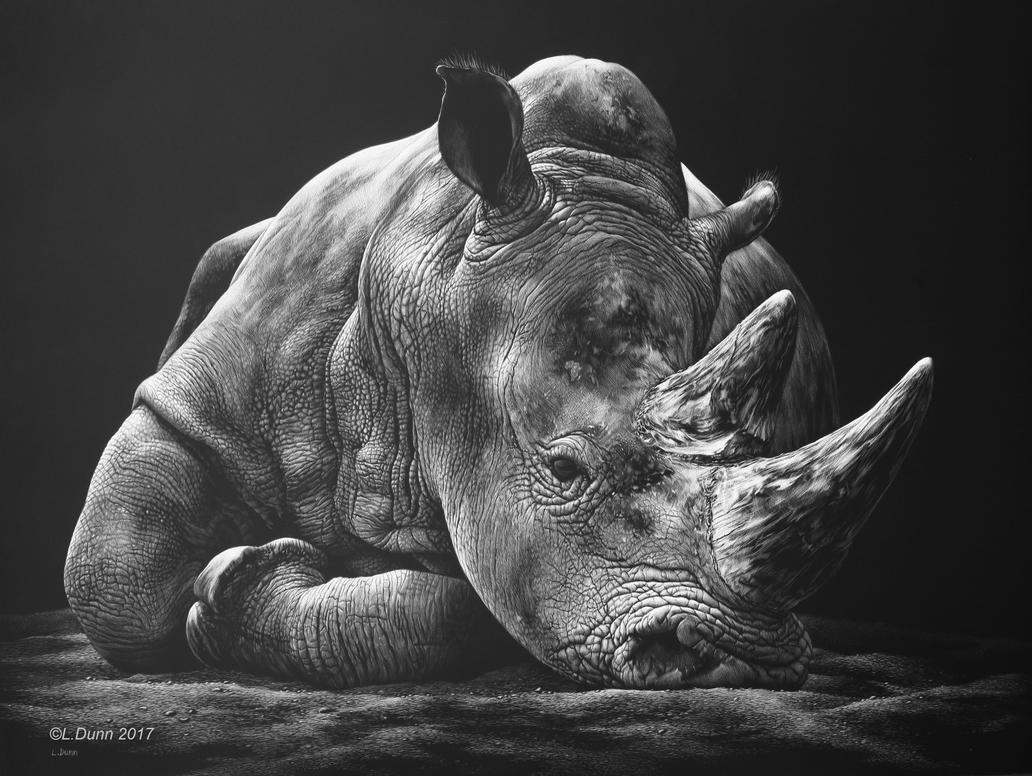LORI DUNN SCRATCHBOARD ART
promoting conservation through artistic efforts
Here, Today...
18 x 24
SOLD
During a relatively warm spell in the earth's climate 30 to 50 million years ago, the prehistoric ancestor of today's modern rhino evolved. Paraceratherium was the largest land mammal ever to live. At more than 20 tons It roamed the open plains over much of the earth. Since that time, other prehistoric species of ancestral rhinos sprang up, taking advantage of a diverse range of ecosystems. The planet had vast numbers of these species, in a wide range of physiological forms and sizes. As recent as 10,000 years ago there were even woolly rhinos, existing in cold, dry steppe habitat. Ancient rhinos once thrived on the face of the earth. Sadly, the reverse is now evident.
Today, there are only 5 species of rhinoceros, 3 of which are critically endangered, and the other two could very well face this status in the future. Of the critically endangered species, the Javan rhino is limited to about 60 individuals. The white rhino, represented in this artwork, contains a small but relatively stable population in Southern Africa but their northern counterpart ( a separate subspecies) have been reduced to only 3 individuals that are now heavily guarded.
Despite habitat loss gradually reducing populations, the biggest and most pressing threat to the survival of the rhino is poaching for their horns. Rhino horn and elephant tusks have now become a huge commodity in China and other Asian countries, the value of the material being so high that it is now linked with organized crime and terrorism. Despite drastic efforts including ranching combined with sport hunting, de-horning and injecting dye into horns, these have failed to halt the rapid rate of increase in poaching in South Africa - the last stronghold for most of Africa's rhinos.
Saving the last remaining rhinos goes far beyond a simple conservation issue. Finding a solution to this scale of poaching will no doubt require political, cultural and military intervention. We must be diligent in remaining advocates for these truly incredible and prehistoric looking beasts. For now they are here today. We can only hope they will not be gone, tomorrow.
